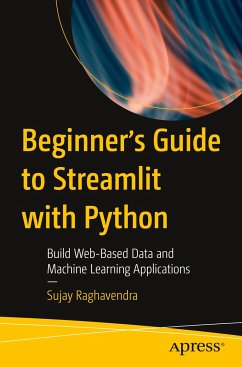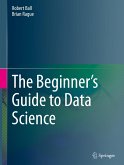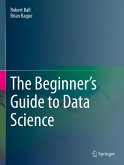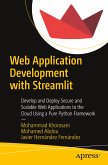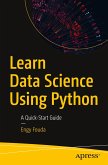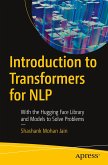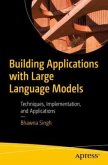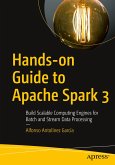This book will teach you the basics of Streamlit, a Python-based application framework used to build interactive dashboards and machine learning web apps. Streamlit reduces development time for web-based application prototypes of data and machine learning models. As you'll see, Streamlit helps develop data-enhanced analytics, build dynamic user experiences, and showcases data for data science and machine learning models.
Beginner's Guide to Streamlit with Python begins with the basics of Streamlit by demonstrating how to build a basic application and advances to visualization techniques and their features. Next, it covers the various aspects of a typical Streamlit web application, and explains how to manage flow control and status elements. You'll also explore performance optimization techniques necessary for data modules in a Streamlit application. Following this, you'll see how to deploy Streamlit applications on various platforms. The book concludes with a few prototype natural language processing apps with computer vision implemented using Streamlit.
After reading this book, you will understand the concepts, functionalities, and performance of Streamlit, and be able to develop dynamic Streamlit web-based data and machine learning applications of your own.
What You Will Learn
How to start developing web applications using Streamlit What are Streamlit's components Media elements in Streamlit How to visualize data using various interactive and dynamic Python librariesHow to implement models in Streamlit web applications
Who This Book Is ForProfessionals working in data science and machine learning domains who want to showcase and deploy their work in a web application with no prior knowledge of web development.
Beginner's Guide to Streamlit with Python begins with the basics of Streamlit by demonstrating how to build a basic application and advances to visualization techniques and their features. Next, it covers the various aspects of a typical Streamlit web application, and explains how to manage flow control and status elements. You'll also explore performance optimization techniques necessary for data modules in a Streamlit application. Following this, you'll see how to deploy Streamlit applications on various platforms. The book concludes with a few prototype natural language processing apps with computer vision implemented using Streamlit.
After reading this book, you will understand the concepts, functionalities, and performance of Streamlit, and be able to develop dynamic Streamlit web-based data and machine learning applications of your own.
What You Will Learn
How to start developing web applications using Streamlit What are Streamlit's components Media elements in Streamlit How to visualize data using various interactive and dynamic Python librariesHow to implement models in Streamlit web applications
Who This Book Is ForProfessionals working in data science and machine learning domains who want to showcase and deploy their work in a web application with no prior knowledge of web development.

